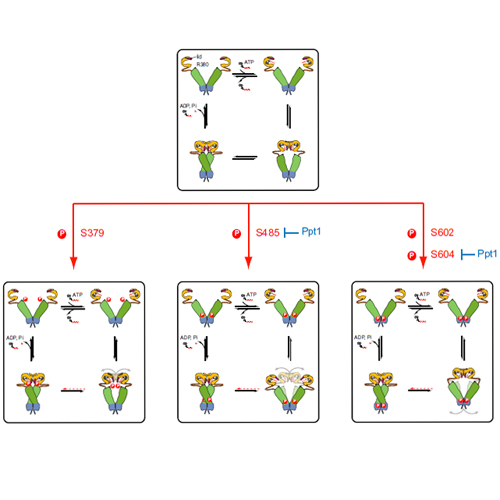Conformational Switching of the Molecular Chaperone Hsp90 via Regulated Phosphorylation
24-Feb-2012
Molecular Cell, 2012, doi:10.1016/j.molcel.2011.12.031, Volume 45, Issue 4, 517-528 published on 24.02.2012
Molecular Cell, online article
Molecular Cell, online article
Hsp90 is an essential molecular chaperone in the eukaryotic cytosol. Its function is modulated by cochaperones and posttranslational modifications. Importantly, the phosphatase Ppt1 is a dedicated regulator of the Hsp90 chaperone system. Little is known about Ppt1-dependent phosphorylation sites and how these affect Hsp90 activity. Here, we identified the major phosphorylation sites of yeast Hsp90 in its middle or the C-terminal domain and determined the subset regulated by Ppt1. In general, phosphorylation decelerates the Hsp90 machinery, reduces chaperone function in vivo, sensitizes yeast cells to Hsp90 inhibition and affects DNA repair processes. Modification of one particular site (S485) is lethal, whereas others modulate Hsp90 activity via distinct mechanisms affecting the ATPase activity, cochaperone binding and manipulating conformational transitions in Hsp90. Our mechanistic analysis reveals that phosphorylation of Hsp90 permits a regulation of the conformational cycle at distinct steps by targeting switch points for the communication of remote regions within Hsp90.











